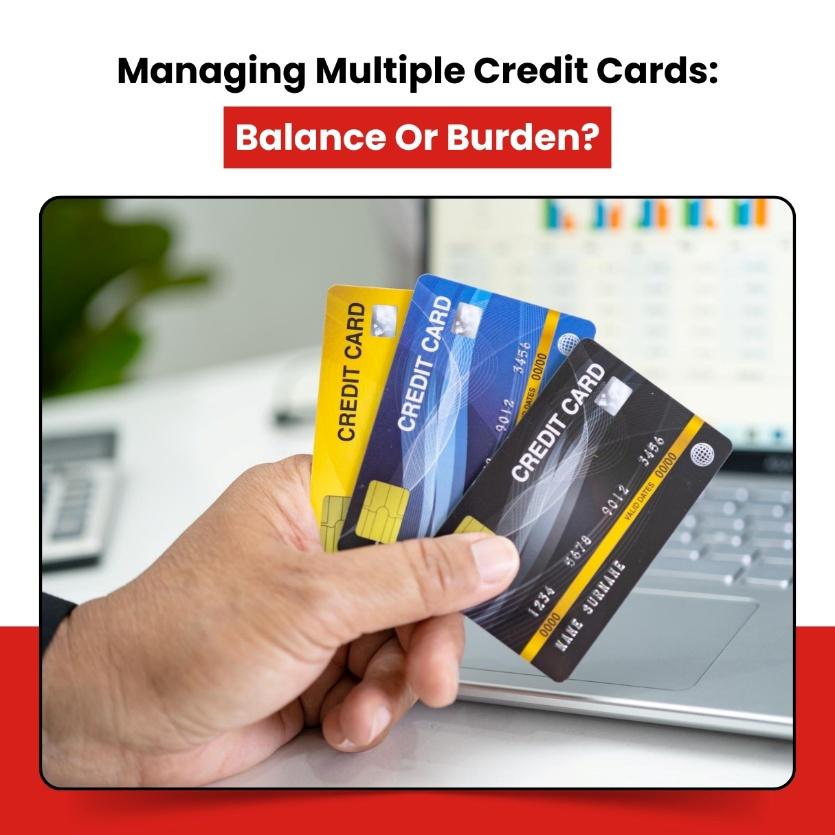If you’ve ever pulled out your wallet at the checkout line and shuffled through more than one card, you’ve probably asked yourself: Do I have too many credit cards? It’s a common concern for Canadians, especially as financial institutions flood the market with offers ranging from premium travel perks to top-rated cash back credit cards.
Some people carry just one card and swear by simplicity. Others proudly manage five, six, or even more, using each one strategically. But is there a point where multiple cards start hurting more than helping? The short answer: it depends.
In this blog, we’ll explore the reality of how many credit cards in Canada is too many, bust common myths, and highlight how savvy Canadians use multiple cards to boost credit scores, earn rewards, and stay financially agile.
Myth vs. Reality: Do Multiple Credit Cards Hurt Your Score?
The biggest myth in Canadian personal finance is that having multiple cards automatically lowers your credit score. In fact, the opposite can often be true—if they’re managed responsibly.
Your credit score in Canada is based on several key factors:
- Credit Utilization: How much of your available credit you’re using.
- Payment History: Whether you pay on time.
- Length of Credit History: The average age of your accounts.
- New Inquiries: How often do you apply for new credit.
- Types of Credit: The mix of credit products you hold.
If you space out applications, pay balances in full, and avoid maxing out cards, multiple credit lines can actually improve your score. More available credit means lower utilization ratios—an important positive signal to lenders.
How Many Credit Cards in Canada is “Normal”?
There isn’t a universal number that fits every Canadian. Some people thrive with two, while others comfortably manage six or more. A 2022 TransUnion report showed the average Canadian holds about 2.7 active credit cards. That doesn’t mean more is bad—it just means most people stop there.
Here’s a breakdown of what different “tiers” look like:
- One to Two Cards: Simple management, good for beginners or those building credit.
- Three to Four Cards: Allows strategic use of rewards and categories (e.g., one for groceries, one for travel, one for recurring bills).
- Five or More Cards: Requires discipline but can unlock the best of travel perks, sign-up bonuses, and category optimization.
The right number for you depends on your income, spending habits, and ability to track due dates.
The Credit Utilization Advantage
When Canadians ask how many credit cards in Canada is too many, what they often overlook is utilization.
Let’s say you have one credit card with a $5,000 limit. If you regularly spend $2,000 a month, your utilization ratio is 40%. That’s higher than the recommended 30%.
Now imagine having three cards with a combined limit of $15,000. The same $2,000 in spending now represents just 13% utilization. That drop can significantly improve your credit score.
The key is not to carry balances—interest rates wipe out rewards and benefits. Always pair higher limits with full monthly payments.
Age of Credit and Strategic Spacing
One risk with opening too many cards too quickly is damaging the average age of your credit accounts. Lenders like to see long-standing relationships, so having a card you’ve held for 10+ years is valuable.
That’s why Canadians should:
- Keep Old Cards Open: Even if you don’t use them often, consider holding on to no-fee cards to preserve your credit age.
- Space Applications: Avoid applying for multiple cards in a short time. A general rule is one to two new cards per year, depending on your goals.
This is where strategy matters. If you want the Amex Gold Credit Card for its dining and grocery perks and the TD Cash Back Visa for recurring bills, stagger applications six months apart. This ensures inquiries don’t pile up and your score remains steady.
When Too Many Cards Become a Problem
While multiple cards can be powerful tools, there are warning signs Canadians should watch for:
- Missed Payments: Juggling due dates across six cards increases the risk of slipping up.
- Annual Fees Adding Up: Premium cards like the Amex Business Platinum Card deliver great value, but only if you use the perks. Paying $700+ in unused fees is a waste.
- Chasing Rewards Recklessly: Applying for every promotion without a plan can hurt your score and clutter your finances.
- Debt Temptation: More available credit can tempt some Canadians to overspend. If you struggle with discipline, fewer cards might be safer.
Practical Strategies to Manage Multiple Cards
If you want to carry multiple cards responsibly, here are some expert-approved tactics:
- Automate Payments: Set up autopay for at least the minimum balance to avoid late fees.
- Use Spreadsheets or Apps: Track due dates, annual fees, and reward categories.
- Match Cards to Categories: Assign one card to groceries, another to travel, and so on.
- Consolidate When Needed: If managing multiple cards becomes stressful, scale back to a core set of two or three.
- Review Annually: Check whether you’re still getting value from premium perks like lounge passes or insurance.
Canadians and the Fear of “Too Much Credit”
A surprising number of Canadians hesitate to apply for a second or third card because they worry it looks irresponsible. In reality, lenders care less about the number of cards and more about how you use them.
Having $50,000 in total available credit doesn’t make you risky if you only use $5,000 and pay it off every month. In fact, it makes you look stable.
The real danger lies in misunderstanding rewards and biting off more than you can chew. The best Canadian cardholders understand that rewards like Amex Cash Back or travel perks are bonuses, not excuses to overspend.
The Smart Way Forward
So, how many credit cards in Canada is too many? The answer isn’t a single number—it’s about alignment with your lifestyle and discipline.
If you’re paying in full, managing categories strategically, and keeping annual fees in check, there’s no reason multiple cards should hurt you. In fact, they can improve your score, enhance your lifestyle, and put valuable rewards back in your pocket.
But if cards start to feel overwhelming, simplify. The right balance is the one that supports your financial health—not the one that chases every promotion.
Ready to make your credit cards work harder for you? I always apply through Great Canadian Rebates to earn extra bonuses on top of rewards. Start stacking your savings today and maximise your cash back.


